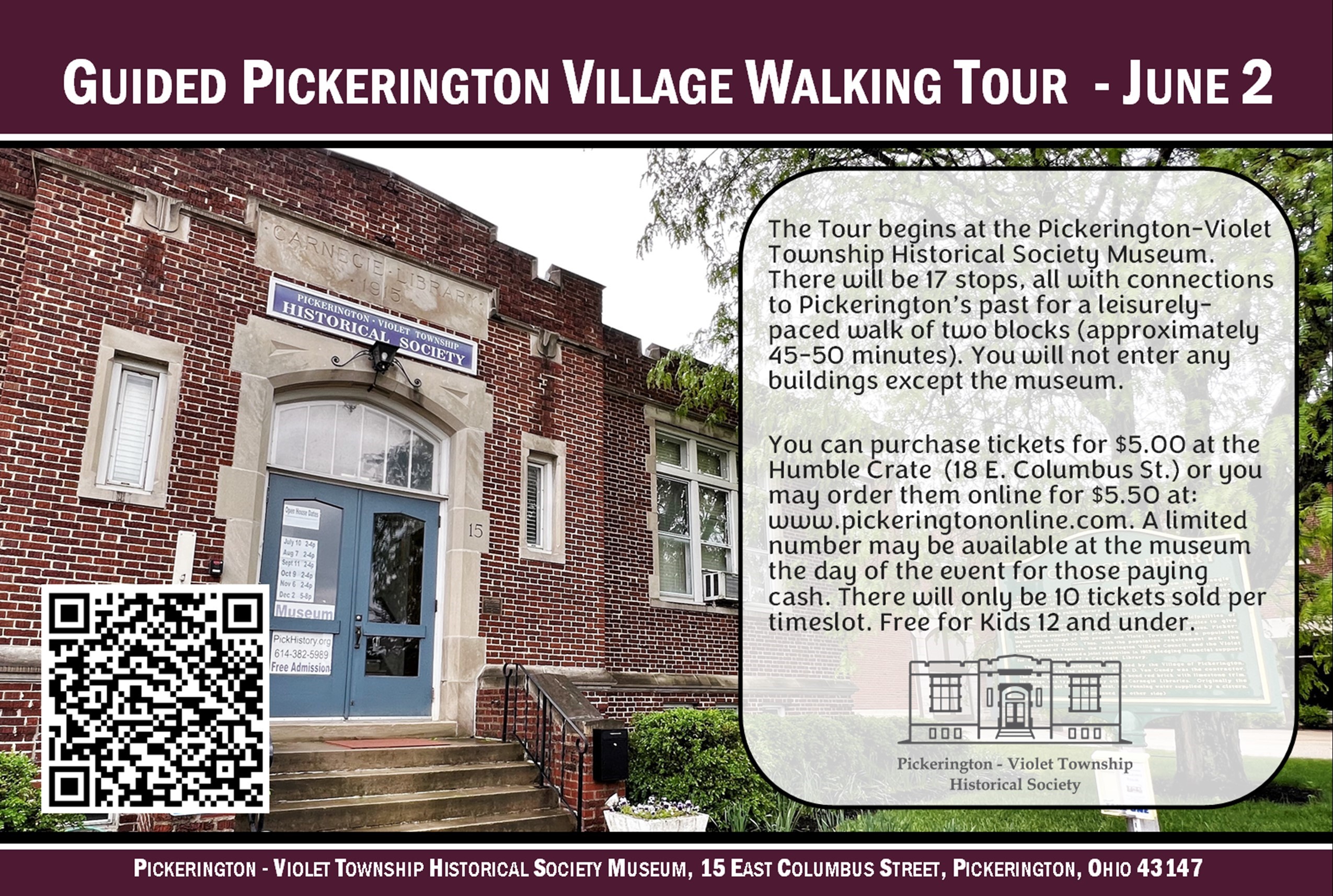
Photo Ana Gasser, Pickerington Online Intern & Sophomore at Pickerington Central
February 1, 2022
Next school year, the Pickerington Local School District (PLSD) will implement changes to relieve the overcrowding of its buildings.
“I hate to use the term ‘Band-Aid’ but the reality is that this plan is going to be a Band-Aid for us until we can get more space,” Superintendent Dr. Chris Briggs said. “We are going to try to provide the best environment we can with what we have and that’s a challenge.”
Nine of the district’s fourteen buildings currently have reached greater than 85 percent capacity with Pickerington Central already exceeding its maximum by 300 students. (See also: A Student’s View of the PLSD Overcrowding)
District officials say the overcrowding problem will not go away until a bond issue passes and new buildings are constructed.
“I’m hoping that whatever changes we make this year will be part of a three-to-four-year plan going forward because the changes that we make are not going to last a year,” board member Cathy Olshefski said. “Now we have to talk turkey with the community in particular and really make them realize the severity of the challenges that we are dealing with every day.”
Currently, the PLSD is paying teachers “a lot of overages” in all grade levels, according to Dr. Heather Hedgepeth, PLSD Chief Administrative Officer.
At each grade level there is a maximum regarding the student to teacher ratio – elementary caps at 26 students, middle school and junior high cap at 28, and high school caps at 30.

Photo provided by Pickerington Local School District
“When we go over that number, we have to pay overage to our teachers,” Hedgepeth said.
Restricted Open Enrollment
The district is considering options for next year in terms of open enrollment.
No students may open enroll into schools that have reached 85 percent of more of their capacity; Sycamore Creek Elementary, Toll Gate Elementary, Tussing Elementary, Violet Elementary, Diley Middle, Lakeview Junior High, Ridgeview Junior High, Central High and North High.
One option is to eliminate open enrollment completely. Another option is to allow open enrollment for just the schools that currently have availability.
The third option is to allow open enrollment in just schools that currently have availability but reducing the term of open enrollment from one school year to one semester.
“So, let’s just say a parent enrolls their kid in Fairfield but Fairfield comes to their max, then we would move that kid back second semester to their home building,” Hedgepeth said. “That is inconvenient for everyone, however we do have to make sure that we’re taking care of our kids that their home building is their first priority.”
Board member J.D. Postage disagreed with the third proposal.
“I’d be concerned about doing that to that student and that family,” Postage said. “I’d be kinda against that.”
Regardless of the final decision, but especially if the administration chooses the single semester option, board member Keith Kristoff insists that the administration make their decision “stupidly clear” to families.
“I mean, whatever you can do to beat them over the head, sign in blood, whatever it takes to ensure they understand that ‘yes, we’re going to continue to do this as long as we can, but there is a real possibility that this is a temporary thing’,” Kristoff said.
Some students will be allowed to remain open enrolled due to issues such as athletic eligibility in the high schools. This is not an issue at the junior high.
“You do not have to worry about athletic eligibility if someone plays seventh grade at Ridgeview and they go back to Lakeview,” Treasurer Ryan Jenkins said. “You are not messing up their OHSAA eligibility in any way, shape or form. You would be potentially if it’s a ninth grader or higher.”
According to Jenkins, 595 students are currently open enrolled in the district, but that number includes some special education classes and the Gateway program.
Redistricting
The district is also considering redrawing the district boundaries to move students from overcrowded buildings to those that still have space. The first areas that PLSD will consider for the redistricting process will be new neighborhoods.
“My apologies if anyone is building in Heron Crossing II,” said Jenkins, “but that’s a perfect example. I’m sorry if anyone thinks they are going to walk right over to Toll Gate. I get it someone may have signed a contract thinking ‘that’s my school’ but that’s what we are recommending and that’s as fast as next year.”
Jenkins defined a “new neighborhood” as “any neighborhood that you drive by and you can still see the Tyvek wrap on the houses or they still don’t have grass in their yards.”
After the new subdivisions, the schools will work with Petermann Bus Services to determine which existing neighborhoods will be redistricted before the 2023/24 school year.
“There’s not a school in this district that I wouldn’t put my kids in,” Briggs said. “We all have different cultures and challenges, but they all have wonderful teachers and wonderful administrators and that’s how we’re going to have to plan this out.”
Gateway
Another possibility being discussed would be to move the Gateway Program for gifted students in grades four through six, which is currently located at Toll Gate Middle, in whole or in part to Harmon Middle. District administrators will collaborate with Gifted Coordinator Todd Stanley to determine how best to split the program.
Hybrid Learning
Yet another option may be a return to hybrid learning, like what the district utilized during the 2020-21 school year, for at least a portion of the district.
“I know that our high schools and junior highs especially Central and Ridgeview are maxed out,” Hedgepeth said. “We need to develop plans on doing some sort of virtual cohorts for not only those buildings but any other buildings. That will take a lot of discussion about what that practice looks like and what it means contractually.”
Olshefski believes that the district has no choice but to enact hybrid learning, or “split sessions” as it was called in the “old days” at the secondary level.
“We don’t have any place to put those students,” she said. “We’ve got to get these kids out of the buildings, but we still have to teach them. We have to relieve the pressure on the buildings on a day-to-day basis. This is impacting academic excellence and student behavioral issues and for me that is important.”
Hybrid learning is more viable than modular classrooms due to the high cost of the modular classroom space.
“These modular classrooms must be plumbed for water and sewer and must be secured for student safety—at great expense,” Jenkins said. “Additionally, the operational costs of heating and cooling the modular units can be exorbitant.”
Discussions will begin the first week of February and continue for several months Hedgepeth estimated.
Bond Issue
“No solution here is going to solve the problem,” Jenkins said. “The closest thing to solving the problem is more space, new buildings.”
In November 2020 and again in May 2021, voters rejected a 2.9 mill bond issue which would have generated $95 million to build a new junior high school, add classrooms to both high schools and upgrade athletic facilities.
In a survey completed last summer, when asked “what is the biggest reason that you think that many voters voted against the bond issues?” – the top answer (by 30% of the respondents) was that property owners did not want an increase in taxes.
Had the voters approved the bond issue, the owner of a property with an appraised value of $300,000 (therefore an assessed value of $115,000) would have paid an additional $101.50 per year, or $8.46 per month.
Also, five percent of community members said they voted against the issue because it included funds for sports facility upgrades including a new football stadium for Pickerington Central.
“What we are talking about tonight is the cold splash of water in everybody’s faces that is the reality that we are dealing with today and for the next three years assuming we go on the ballot in November,” Olshefski said. “It is imperative that we go on the ballot in November, that we reevaluate the design of the bond within the next month so we can start talking to the community.”
Before the school board decides to place an issue on the autumn 2022 ballot, the proposal may be different from the one which voters twice rejected.
“The community had some questions about prior designs of the bond. Some of us might like the prior design, some of us may want to even add to it. I do know that our high schools are busting at the seams and we’re not talking about building a third high school in the current/former bond designs. To me, the most important option to manage the overcrowding is to pass a bond in November 2022.”



















